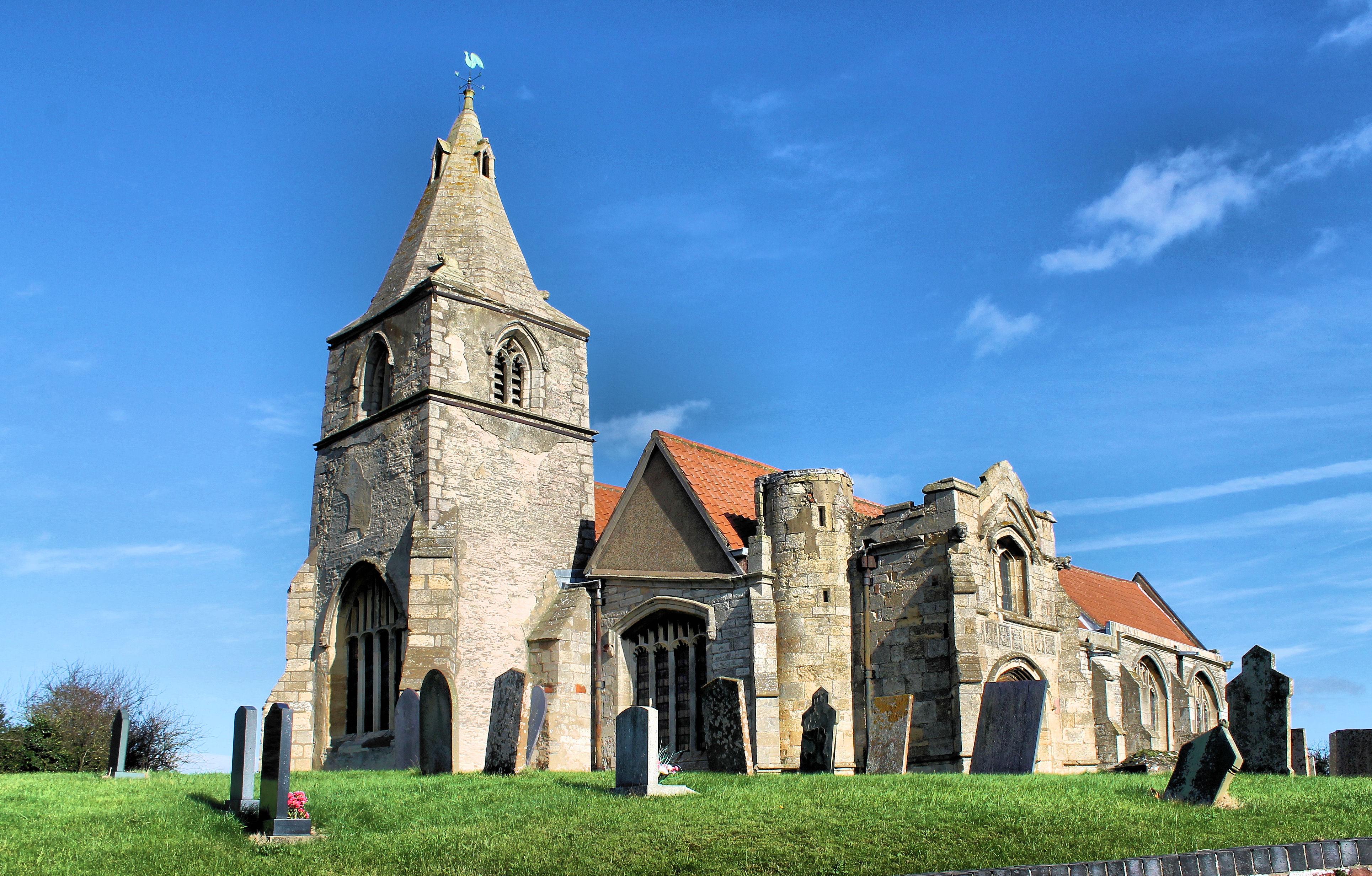St Wilfrid
North Muskham, Nottinghamshire

Holme was a much more frequented place until the 16th century, when the River Trent changed course to leave it isolated on the eastern bank.
Holme, Nottinghamshire
A century or so before that, Holme's 13th century church had been extensively renovated and embellished, in fine 15th century style, by a wealthy wool merchant named John Barton. He died in 1491 and his will survives, documenting his family and his last wish to be buried here. His effigy lies beside that of his wife Isabella (and above a cadaver), on their tomb, between the chancel and the chapel he built next to it.
Since Barton's day little has changed in the church, though it was sensitively restored in 1932 by local historian Nevile Truman. Evidence of Barton's generosity remains in many features and details, including the large Perpendicular windows and the ornate gabled two storey porch with its heraldic shields, some referring to sheep and the wool trade, and gargoyles. A motif on Barton's tomb that is repeated in the roof and elsewhere is a pun on his name: it depicts a bar and a barrel, or tun.
Among other carved treasures is the screen and the wonderful bench ends in Barton's chapel. Each of the poppyheads on top is flanked by a pair of expressively carved creatures, from angels to dogs and birds.
North Muskham, Nottinghamshire
Cromwell, Nottinghamshire
Cromwell, a small village of around 200 inhabitants, lies to the west of the Trent about five miles north of Newark.
Collingham, Nottinghamshire
This ancient parish church was originally the parish church of South Collingham.